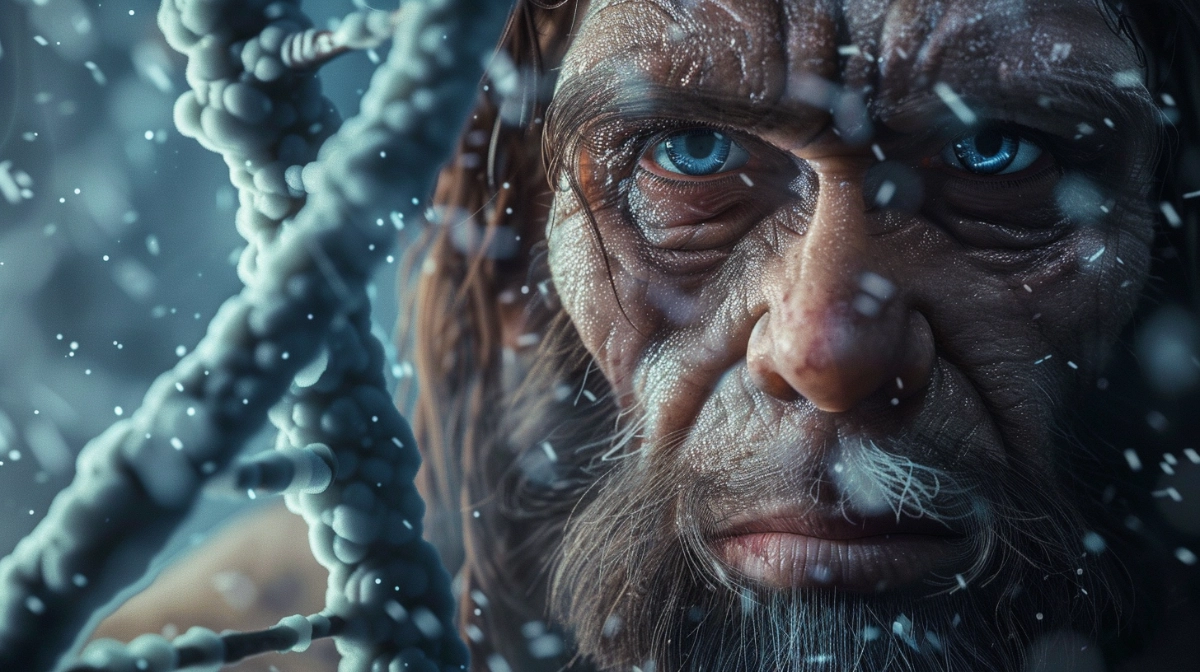Researching your genealogy is a great way to discover many different things about you that you didn’t know. A commons question I’m asked is, how many generations does DNA go back.
If you’re using an autosomal test such as AncestryDNA, 23andMe, or MyHeritage, you’ll generally go back 6 to 8 generations. Assuming 25 years per generation, you can expect 150-200 years of DNA information by taking an autosomal DNA test.
Autosomal tests are the most common DNA tests, and they give you a report on your ethnicity as well as your DNA matches. For instance, it will say “50% English, 30% Scottish, etc.”
How far back does AncestryDNA go?
AncestryDNA tests use autosomal DNA, which determines your ethnicity. Therefore, the AncestryDNA test will go back about 6 to 8 generations or around 150-200 years.
Which test goes back the farthest?
If you want a test that can trace back to your ancient origins, then you’ll want a YDNA or mtDNA test. However, women do not have YDNA, so they would need a male relative to get tested instead.
Moreover, mtDNA and YDNA tests aren’t very beneficial for genealogy, but they’re a great way to pinpoint the ancient origins of your direct paternal and maternal lines. YDNA and mtDNA tests for genealogical purposes are only offered by FamilyTreeDNA.
Autosomal DNA tests are all the same regardless of the company that you purchase the test through. Therefore, whether you choose 23andMe, AncestryDNA, or MyHeritage, these will both bring you back the same amount of DNA history
How many generations does mtDNA testing go back?
An mtDNA or mitochondrial DNA test will show generations that are both recent and distant. However, your individual results may vary.
For example, if you match someone on HVR1, then your chances are about 50% of finding that you share a mutual maternal ancestor dating back over 52 generations, or around 1,300 years.
If you match someone on both HVR1 and HVR2, this will mean that there’s a 50% chance that you share a related maternal ancestor over the last 700 years or 28 generations.
Now, if you match on a Mitochondrial DNA Full Genomic Sequence, then this will show you the most recent results. This will give you a 50% chance that you share a common mutual maternal ancestor dating back over the last 125 years or previous five generations.
Moreover, the Mitochondrial DNA testing that they do at Family Tree DNA will include haplogroup testing. The haplogroup will help you discover your ancient ancestral origins going back over 10,000 years.
Source: FTDNA
How many generations does YDNA testing go back?
Just like the mtDNA tests, the YDNA tests will show generations that are both recent and distant. However, there are a few different types of tests for YDNA, including single nucleotide polymorphism (SNP) and the short tandem repeat (STR).
SNP tests
The YDNA SNP test will help you confirm your haplogroup so you can discover your ancient ancestral origins. They will trace the earliest anthropological resettlements as well as the most recent prehistoric relocations. You can buy individual SNP tests or panels from FamilyTreeDNA, but I recommend getting the Big Y test instead.
STR tests
On the other hand, the STR test will trace the male lineage back to both ancient and genealogical times. You can check the matches on your account to discover your genealogical connections. This will also tell you the possible countries your linage originated from.
However, these results are dependent on others getting added to the database. The more people who are added to the database, the more accurate the statistic representations are.
How many generations back is 2% DNA?
To find where you get your 2 percent DNA, you will have to search back to about 5 or 6 generations. This would be your great 4x great-grandparents. To figure this out, you will need to use the 50% DNA inheritance rule.
The 50% DNA inheritance rule uses the autosomal DNA patterns where you have 50% of both your mother and father’s DNA. The reason you have 50% DNA from both parents is due to the recombination process. Your body has two copies of its numbered chromosomes.
This doesn’t need to be as confusing as it seems at first. Let’s say that your ancestor has 100% DNA in the Germanic region. We know that due to the recombination process, their children inherited 50% of their DNA.
As the DNA goes down the line, their children’s children (grandchildren) have inherited around 25% of the DNA that traces back to the Germanic region. However, this principle assumes that none of the other ancestors have ancestry in Germany.
Now, you keep dividing that percentage of the Germanic DNA through each generation. What you can expect is that the 4x great grandchild inherits 2% of the Germanic based DNA from the 100% German ancestor. This concept doesn’t always play out in reality though because it assumes that each generation your ancestor married someone who wasn’t of the same ethnicity.
How many generations back is 1% DNA?
Just as you had the 2% DNA result, you may have a 1% result as well. This may even be a region that you had no idea about, such as the Cameroon region. With each generation, your DNA divides. So, for a 1% DNA result, you would be looking at around seven generations. This would go back to your x5 great grandparent.
While this may be confusing to you, it’s not. You have 50% DNA from each parent, just like your parents have 50% DNA from both of your grandparents, and so on. It’s the same concept as the 2% DNA; it just expands one more generation.
If you have a Norwegian mom, but her mom was Scandinavian, and her father was Norwegian, then she would be both Scandinavian and Norwegian. Therefore, if your mom is half Norwegian and half Scandinavian and your dad is full-blooded Scandinavian, then this means you are ¾ Scandinavian and ¼ Norwegian on paper.
However, this is a remarkably simple example, but the numbers are more complicated due to the ethnicity being split between multiple people. This means that the numbers you expect to see may not be the correct number.
Another way to restate this is that your ethnicity divides with each past generation. You have 50% of the DNA from your parents. Then, 25% of that will be derived from your grandparents. Going further back, it’s 12.5% from your great grandparents and continues onto your great-great-grandparents.
So, for the random 1% DNA result and the halving rule, this would mean that this ethnicity came into your bloodline around seven generations back. Let’s assume you had 1% Cameroon. You would have gotten the 1% Cameroon from your great, great, great, great, great grandparent, who was 100% Cameroon.
It’s also important to note here that if you see 1% of a certain ethnicity in your DNA report, it’s very possible it’s a false match.
Conclusion
The number of generations your DNA test goes back highly depends on the test that you buy. If your test is only analyzing autosomal DNA, then you can expect your test to reflect ancestors that go back 6 to 8 generations.
If you choose to do a YDNA or mtDNA test, this type of DNA will provide you with ancestors that originated over 10,000 years ago. This is why it’s essential that you check your test out first to see exactly what type of DNA it analyzes, so you can choose the test that goes as far back as you were wanting.



How has uncovering your family history impacted your sense of identity and belonging in the world? Have you discovered any surprising or controversial information that has challenged your understanding of yourself and your family?”
Digging into my family history has definitely deepened my sense of identity and connection to the past. I think many of us find unexpected stories or complicated histories that add new layers to how we see ourselves. It can be surprising—and sometimes a little challenging—but ultimately, it brings a richer understanding of where we come from.
Thank you Marc McDermott. Very well written . Easy to understand. I can’t wait to read your next article.